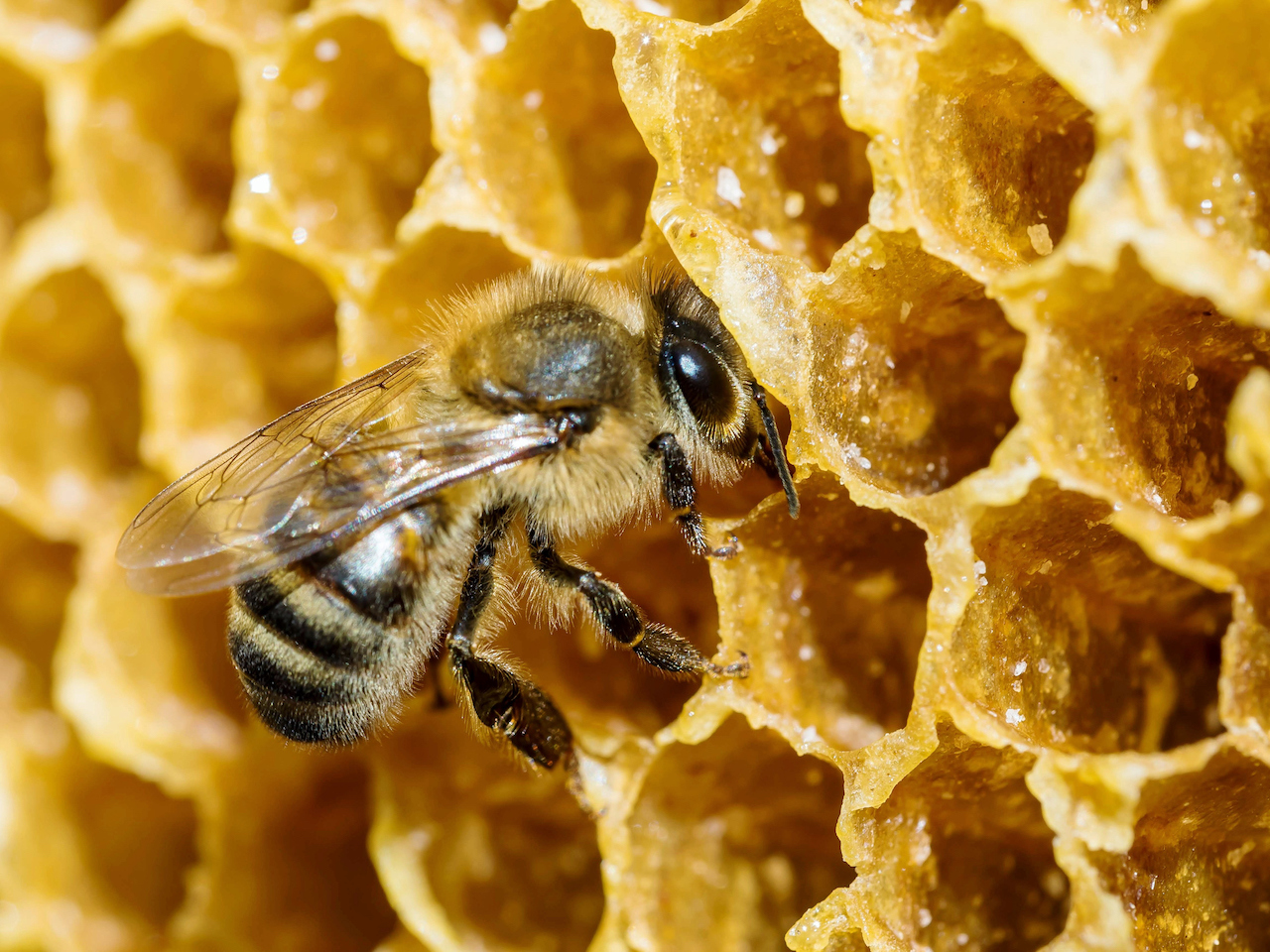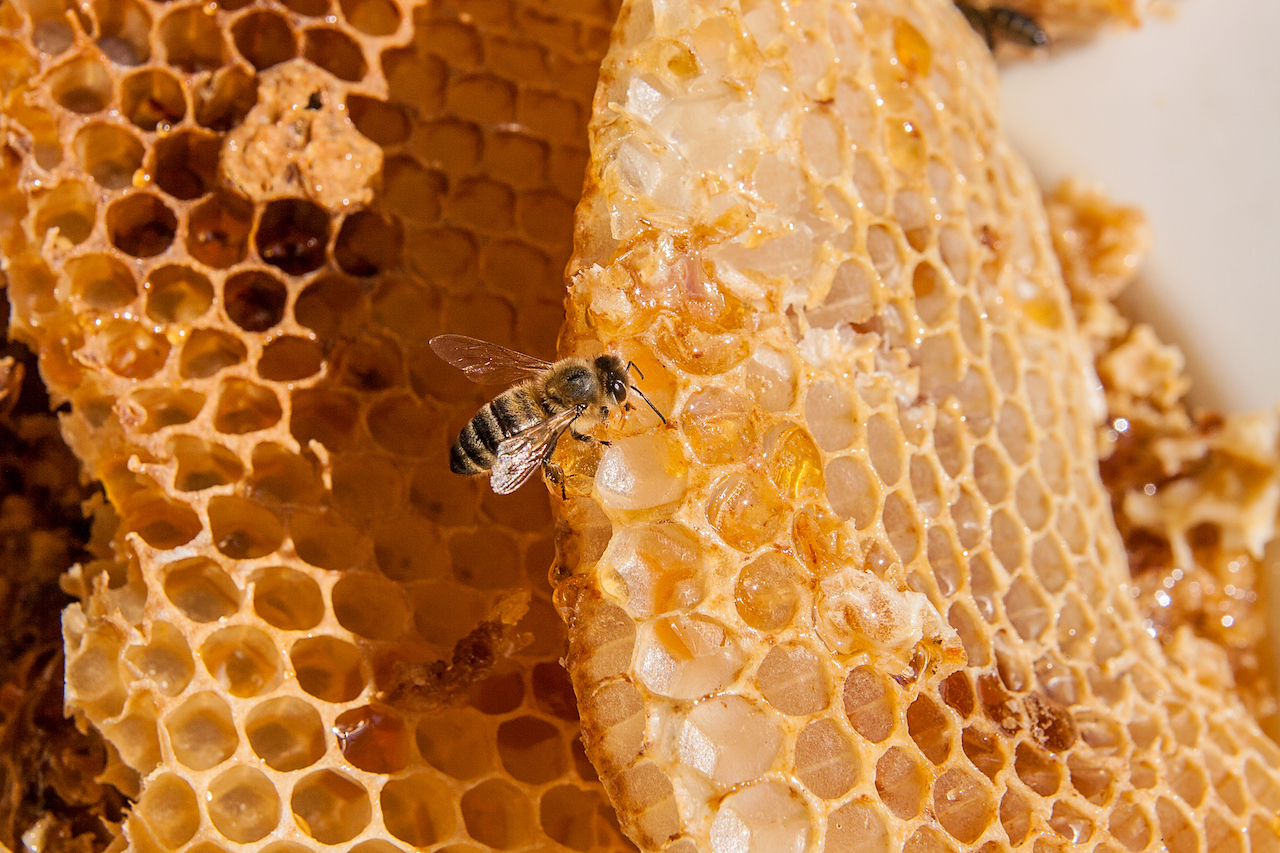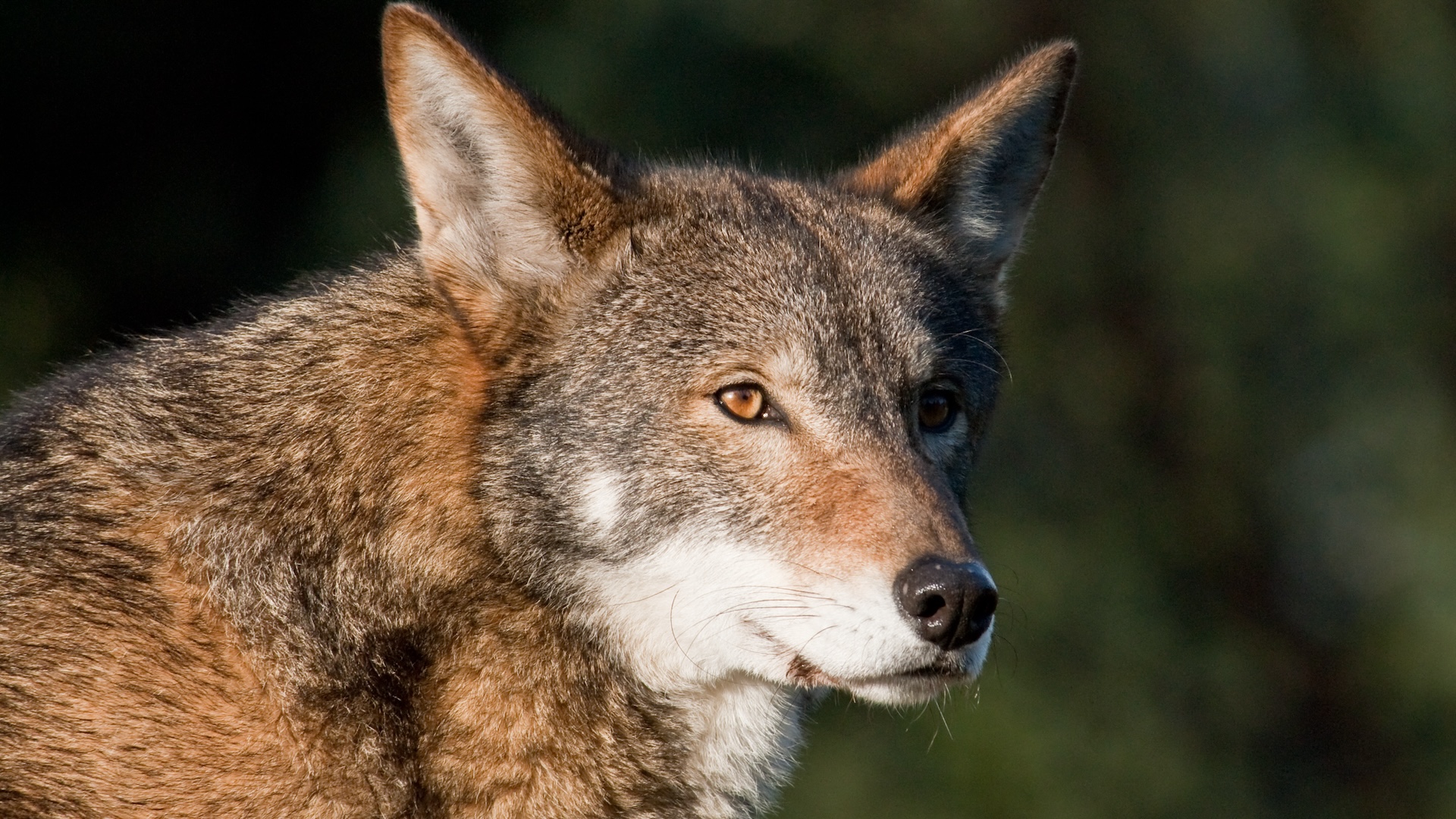How do bees make honey? From the hive to the pot
By producing masses of this sweet substance, honeybees can stay active throughout the winter period. But how do they make it?

How is honey made? Unlike many other bees, honeybee species don't hibernate in winter. Instead, they stay active in their hives. During the coldest months, honeybees cluster together to keep warm and survive on the sweet substance that they have been hoarding for weeks in advance. That substance is honey.
All of the bees in a hive benefit from the honey haul, but the job of honey production lies with the female worker bees, according to biologists at Arizona State University. These forager bees fill their stomachs with nectar from flowers before returning to the hive to convert it into honey.
"All bees during their life have different roles, depending on how old they are," Cooper Schouten, a lecturer at Australia's Southern Cross University and director of the Bees for Sustainable Livelihoods Research Group, told Live Science in an email.
He said worker bees will fly up to fly up to 3.1 miles (5 km) miles in search of flowers and nectar, visiting between 50 and 100 flowers per trip. "Nectar is the main ingredient for honey and also the main source of energy for bees. Using a long straw-like tongue called a proboscis, honey bees suck up nectar droplets from the flower’s special nectar-making organ, called the nectary.
"When the nectar reaches the bee’s honey stomach, the stomach begins to break down the complex sugars of the nectar into more simple sugars that are less prone to crystallization, or becoming solid. This process is called 'inversion.'"
Cooper Schouten is a lecturer at the Southern Cross University in Australia, and director of the Bees for Sustainable Livelihoods project. His research focuses on sustainable beekeeping in the Indo-Pacific region.
Cooper said after a worker bee returns to its colony, it passes nectar to a house bee — a younger bee aged between 12 and 17 days old. "House bees take the nectar inside the colony and pack it away in hexagon-shaped beeswax honey cells," Schouten said.
"They then turn the nectar into honey by drying it out using a warm breeze made with their wings. Once the honey has dried out, they put a lid over the honey cell using fresh beeswax — kind of like a little honey jar. In the winter, when the flowers have finished blooming and there’s not as much nectar available, the bees can open this lid and share the honey they saved."
Male honeybees, which make up about ten per cent of the hive population, spend their lives eating this honey, before leaving the hive to mate.
How much honey does a bee colony produce?
There are many factors that determine how much honey a single bee colony will need to produce for the winter months. It depends on the climate where the bees live, how much ventilation the hive has, the number and kind of bees in the hive, according to the Italian Journal of Animal Science.
"The behavior of bees and therefore their productivity, is highly affected by the weather, including temperature, wind, rainfall and humidity," Schouten said, adding the ideal internal temperature of a hive is around 95 degrees Fahrenheit (35 degrees Celsius).
"Honey bees maintain this temperature (homeostasis) in winter by huddling together, sealing cracks in the outside of the hive, and buzzing to generate heat. In summer, large numbers of worker bees are out and about during the day, which helps to keep the temperature down. If the outside temperature is high, foragers bring water back to the hive along with nectar and pollen. As this evaporates, it helps reduce the heat and keep the hive cool. Some of the bees also beat their wings to circulate air inside the hive."
Honeybees will continue to make honey until every cell in their hive is full.
When produced, honey is very long–lasting. Honeybees reduce the water content in honey and add sugar, which greatly limits the ability of bacteria and other microorganisms to grow in it and spoil it, according to the Saudi Journal of Biological Sciences.
A single bee will produce around one-twelfth of a teaspoon of honey in its lifetime. "It takes two million flower visits for a honeybee colony to produce 500 grams (1.1 pound) of honey," Schouten said.
Honeybee anatomy
A honeybee's anatomy is adapted to collect nectar and transfer honey. Click the labels of the interactive image below to discover how the bee's body assists honey production.
In–hive production
A bee may need to visit over 1,000 flowers before its honey stomach is completely full, according to Montana Public Radio (MTPR). When this is achieved it will return to the hive to begin the honey–making process.
A hive can be over 91 degrees Fahrenheit (33 degrees Celsius), according to the Journal of Comparative Physiology, helping some of the moisture evaporate from the stored nectar.
"Bees collect nectar from flowers which is very dilute," Marla Spivak, professor of entomology at the University of Minnesota and leader of the Spivak Honey Bee Lab, told Live Science in an email. "They evaporate water from the nectar by fanning their wings over honey comb cells containing nectar and evaporate water off until the sugar concentration is around 18-19%. They also secrete (from glands) an enzyme that cleaves the sucrose bond in nectar into monosaccharides, glucose and fructose. When diluted and sugar simplified, the bees cap the cells with beeswax and it is called honey." This process, she said, takes a day or so.
When the nectar's moisture content is reduced from 70 percent to about 20 percent, it becomes honey, according to the Journal of Global Biosciences. The honey is stored in cells within the hive until it is needed.
As new bee larvae grow in separate brood cells, honey cells are filled with honey in preparation for the new bees' arrival. When bee larvae have grown and hatch from their cells, honeybees feed them with the energy–rich honey they have collected. The honey is mixed with pollen to form "bee bread" for extra nutrients (protein, carbohydrates, fat, minerals and antioxidants).

Should we harvest honey?
To produce the honey found in supermarkets, beekeepers harvest the honey made from bees in artificial hives. This process is a widely debated topic. How does keeping bees impact honey production, the environment and the bees themselves?
Bees can produce more honey than they need to sustain their colony over the winter period, according to the Journal of Agricultural and Food Information. So, many beekeepers believe that using the excess for human benefit causes little harm to the bees' welfare. Others claim that the bees are overworked as they have to make up extra volumes of honey to replace what's taken, according to the Journal of Environmental Law and Litigation. In addition, when bees' honey is taken and replaced with a sugar alternative, bees aren't getting the same nutrition as wild honeybees.
As bees search for nectar, hairs on their bodies brush flowers and pick up pollen. When flying between plants, the bees transfer the pollen and help flower species to reproduce. This is why it is beneficial to protect bee populations.
Harvesting honeybees increases the number of bees in an area, but because these domesticated bees compete with other native bee species, flower resources become limited and can eventually cause other bee species to die out, according to the University of Cambridge. Different bee species target specific flowers, and so a balance of honeybees and other species is essential in the long–term survival of plant and insect species.
Additional resources
You can read more about the different roles of honeybees and the history of honeybee production at the University of Arkansas System (Division of Agriculture) website. Additionally, for nutritional values of honey, go to the European Food Information Council (EUFIC) website.
Bibliography
- "Colony Life of a Honey Bee". Arizona State University School of Life Sciences (2017).
- "Comparison of colony performances of honeybee (Apis Mellifera L.) housed in hives made of different materials". Italian Journal of Animal Science (2019).
- "The antibacterial activities of honey". Saudi Journal of Biological Sciences (2021).
- "Bug Bytes: How Bees Make Honey". Montana Public Radio (MTPR) (2020).
- "How do bees make honey?" Royal Society for the Protection of Birds (2020).
- "Respiration of individual honeybee larvae in relation to age and ambient temperature". Journal of Comparative Physiology (2004).
- "Physico-chemical Properties of Apis cerana- Indica F.Honey From Uttarkashi District Of Uttarakhand, India". Journal of Global Biosciences (2013).
- "Honey". Journal of Agricultural and Food Information (2011).
- "Think of honeybees as ‘livestock’ not wildlife, argue experts". University of Cambridge (2018).
- "Honeybees and the Law: Protecting our Pollinators". Journal of Environmental Law and Litigation (2015).
Sign up for the Live Science daily newsletter now
Get the world’s most fascinating discoveries delivered straight to your inbox.

Ailsa is a staff writer for How It Works magazine, where she writes science, technology, history, space and environment features. Based in the U.K., she graduated from the University of Stirling with a BA (Hons) journalism degree. Previously, Ailsa has written for Cardiff Times magazine, Psychology Now and numerous science bookazines. Ailsa's interest in the environment also lies outside of writing, as she has worked alongside Operation Wallacea conducting rainforest and ocean conservation research.
